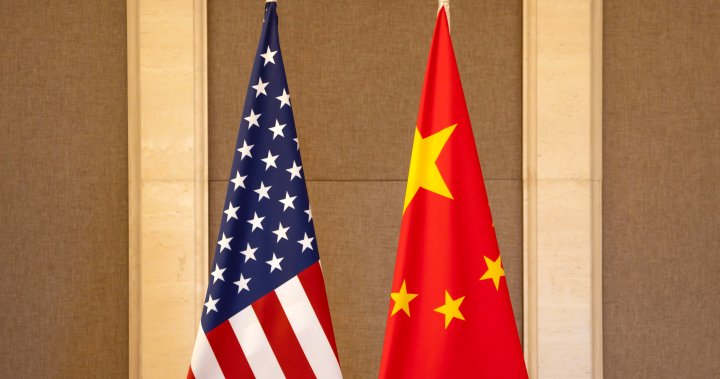China announced Friday that it will raise tariffs on U.S. goods from 84 per cent to 125 per cent — the latest salvo in an escalating trade war between the world’s two largest economies that has rattled markets and raised fears of a global slowdown.
While U.S. President Donald Trump paused import taxes this week for other countries, he raised tariffs on China and they now total 145 per cent. China has denounced the policy as “economic bullying” and promised countermeasures.
The new tariffs begin Saturday.

Washington’s repeated jacking up of tariffs “will become a joke in the history of the world economy,” a Chinese Finance Ministry spokesman said in a statement announcing the new tariffs.
“However, if the U.S. insists on continuing to substantially infringe on China’s interests, China will resolutely counter and fight to the end.”

Get daily National news
Get the day’s top news, political, economic, and current affairs headlines, delivered to your inbox once a day.
China’s Commerce Ministry said it would file another lawsuit with the World Trade Organization against the U.S. tariffs.
Trump’s on-again, off-again measures have caused alarm in stock and bond markets and led some to warn that the U.S. could be headed for a recession.

There was some relief when Trump paused the tariffs for most countries — but concerns remain since the U.S. and China are the world’s number one and number two economies, respectively.
The trade war between the U.S. and China “could severely damage the global economic outlook,” the head of the WTO, Ngozi Okonjo-Iweala, said earlier this week.
Chinese tariffs will affect goods like soybeans, aircrafts and their parts and drugs — all among the country’s major imports from the U.S.
Beijing, meanwhile, suspended sorghum, poultry and bonemeal imports from some American companies last week, and put more export controls on rare earth minerals, critical for various technologies.

The United States’ top imports from China, meanwhile, include electronics, like computers and cell phones, industrial equipment and toys — and consumers and businesses are likely to see prices rise on those products, with tariffs now at 145 per cent.
Trump announced on Wednesday that China would face 125 per cent tariffs, but he did not include a 20 per cent tariff on China tied to its role in fentanyl production.
White House officials hope the import taxes will create more manufacturing jobs by bringing production back to the United States — a politically risky trade-off that could take years to materialize, if at all.
© 2025 The Canadian Press




